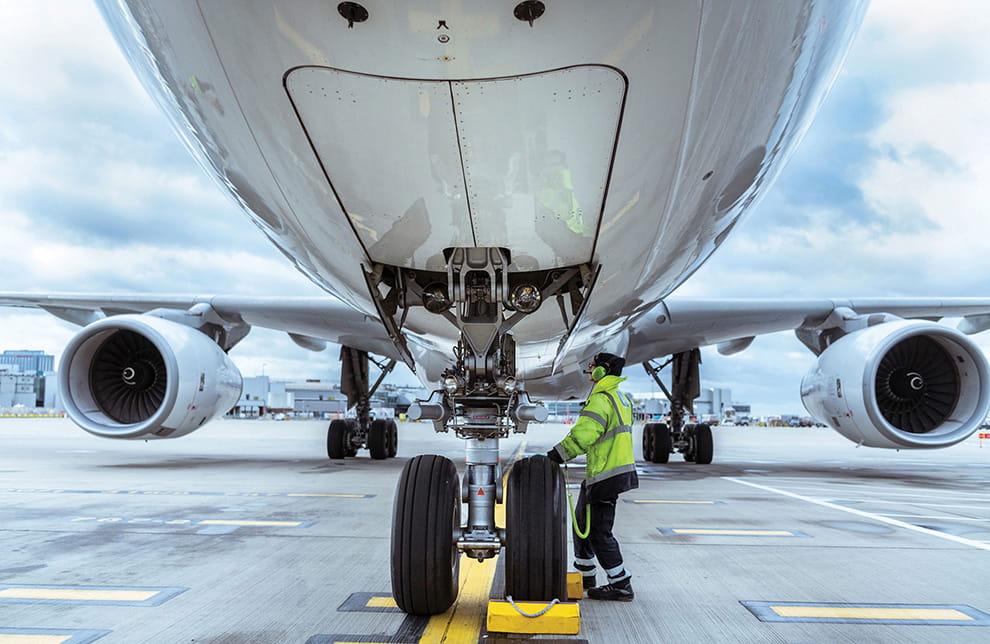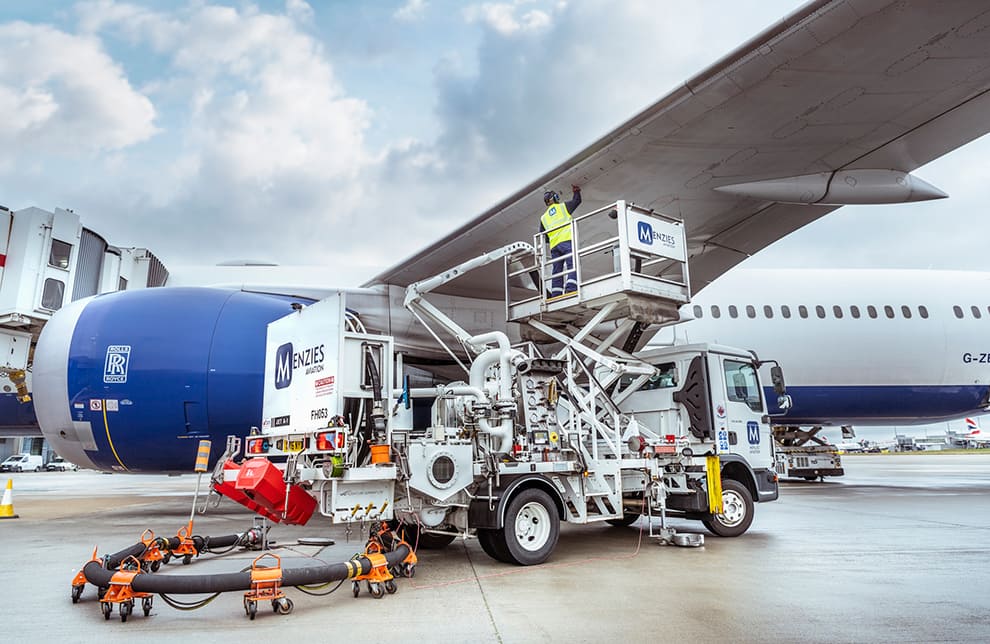Menzies’ 365 days with Deep Turnaround
"Why aren’t we using this?" That was Laura Buying's first reaction upon learning about Schiphol's Deep Turnaround system during a meeting. As an employee at Menzies Aviation, the leading service partner to the world’s airports and airlines, Buying is in charge of ground handling service coordination and maintains relationships with the company’s airline customers. Having implemented Deep Turnaround more than a year ago, she offers insights from her and her team's experience.

In short
- Menzies Aviation boosts operational efficiency using Schiphol's AI-driven Deep Turnaround system, reducing manual communications and delays.
- Deep Turnaround's real-time and predictive data enhances Menzies’ decision-making, leading to improved airline relations and operational precision.
- The system receives widespread support among staff, promising further enhancements in operational efficiency and data-driven management.
Deep Turnaround significantly improves the aircraft turnaround process by leveraging historical, real-time, and predictive data for all stakeholders. Through AI and image-based processing, it yields crucial turnaround data, identifying potential delays up to 40 minutes before the scheduled off-block time and enabling more informed decision-making.
"Significant opportunity”
Laura Buying's daily tasks at Menzies Aviation involve a complex balance of coordinating ground handling services and ensuring smooth communications with airlines. She describes a work environment where unpredictability is the only constant, with factors such as adverse weather conditions and unforeseen operational issues posing regular challenges.
“In the dynamic airport environment, the precision in managing Target Off-Block Time (TOBT) directly impacts our ability to operate smoothly," Buying remarks. "It demands a proactive approach to adaptability to ensure that efficiency and punctuality are prioritised.
Therefore, Buying was pleased to learn about Schiphol's Deep Turnaround system (see also the case study) during a meeting where its capabilities were highlighted. “The system's approach to utilising real-time and predictive data for improving turnaround processes revealed a significant opportunity to enhance our operational efficiency.”
Buying and her team have been using Deep Turnaround for the seven gates they operate at Schiphol for the last 12 months, and she notes that the benefits of the system are clearly becoming visible.


100 phone calls a day
The adoption of Deep Turnaround by the team at Menzies Aviation has enhanced operational efficiency and fundamentally changed how they manage communication, especially during adverse weather conditions. "Previously, our duty managers could be tasked with making up to 100 calls on our busiest days to manage the ever-changing flight schedules. Deep Turnaround has significantly reduced this number, as the system's precise data allows us to immediately know who we need to contact for any issue instead of manually checking in to see which teams were available. This has saved countless hours and minimised the stress typically associated with stormy days," Buying details.
This efficiency has really improved the team's operational focus, she states. "By streamlining our communications, our team can concentrate on their core responsibilities such as safety and compliance. It's also allowed for more personal interactions. Managers find it easier to check in with team members, simply asking, 'How was your weekend?' This change has helped maintain a supportive atmosphere, even on our busiest days," Buying reflects.
Moreover, Deep Turnaround has equipped Buying with actionable data that has proved invaluable in discussions with airlines about operational efficiency. "In a recent meeting, the issue of missing our Target Start-Up Approval Times (TSAT) by 12% was raised. However, I was able to show with data from Deep Turnaround that 11% of these instances were due to captains showing up late. Without Deep Turnaround, such precise information would have been impossible to obtain, leaving us without a solid basis for these crucial discussions," she reveals.


The future of Deep Turnaround
Looking towards the future, Laura Buying is interested in exploring the idea of incorporating historical data functionality into Deep Turnaround. “Currently the dashboard provides real time insights. Historical data is available in a Power BI dashboard but it would be great if I can also easily check the dashboard for historical data so that I can quickly look something up.” Having this information by default would be a valuable addition, she notes.
"We're primarily focused on live data, which is great for immediate decision-making and adjustments. But there's a lot of potential in being able to look back at how certain situations were managed," Buying explains. "We often receive inquiries like, 'Do you remember what time the fueler arrived?' Having the ability to pull up historical data directly would not only respond to such questions more efficiently but also allow us to identify patterns and areas for improvement that we might not observe in real-time."
Furthermore, insights from our current use of Deep Turnaround highlight a great opportunity to boost our operational precision, Buying notes. “The data we've analysed shows that the traditional methods we currently use for setting the TOBT align with actual departure times approximately 60 to 65 percent of the time. In contrast, predictions made by Deep Turnaround align 85 percent of the time, so it would make sense to start relying on the system more.”
Pen-and-paper method
While most have embraced the new system, there are some managers who prefer traditional methods. "We have a few supervisors who prefer the pen-and-paper method. However, the majority find it incredibly useful, keeping it running constantly."
Buying and her team will keep using Deep Turnaround, confident in its potential to further enhance operational efficiency and adaptability. For further details or to explore Deep Turnaround for your operations, please request a live-demo through the website, or contact the team.
Subscribe to Aviation Solutions updates:
Discover what we're up to and receive a quarterly digest of everything related to Aviation Solutions.
Read the previous blogs
-
The Amsterdam Delay Allocation Method explained
Published on:Here’s how airports can improve delay insights by using already available data to get a deep understanding of the delay breakdown, enabling improvements.

-
Deep Turnaround featured on Future Airport
Published on:Future Airport's feature highlights Schiphol and Eindhoven Airport for their adoption of Deep Turnaround tech, revolutionizing airport operations.

-
Schiphol’s all new PRM call points
Published on:Explore Schiphol’s updated PRM call point, enhancing accessibility beyond regulations while improving experiences for PRM passengers.
